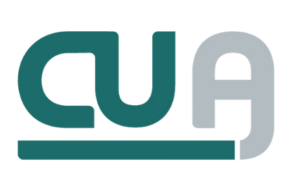Introducing the IT Fitness Program for a small or mid-size business

Does your small or mid-size business need an IT Fitness Program? To help determine the answer, consider the following:
- Have you built the muscle to protect and defend against cyber threats?
- Do you have the agility to meet changing customer needs?
- Are you lean enough to optimize value from your technology investments?
A question I was recently asked by an interviewer from comSpark was, “What do you think is the trend in technology that all industry leaders should be aware of right now?” My answer may surprise you. Below is an excerpt from my response which was published in the spring edition of Lead Magazine.
“It is difficult to just pick one. However, I believe that the most important trend is about leadership and culture, specifically, how we think about the management of technology versus the technology itself. One thing is certain – technology will continue to evolve. It has, quite frankly, outstripped the pace of technology management. Compared to disciplines such as finance and accounting, IT management is in its infancy. We, as business leaders should never get too enamored with one particular latest and greatest technology or trend.”
Perhaps you thought I would have responded with big data, virtual reality, artificial intelligence or another hot topic. Although these are transformational technologies in fashion today, do we know what will be fashionable tomorrow and in the future? Let’s not forget that many companies are still figuring out how to migrate from legacy technologies, move to the cloud, leverage e-commerce to expand their businesses and enhance their customers’ experience.
Earlier this year, IT Ally™ introduced a new diagnostic, called the IT Fitness Test, to assess the effectiveness of the IT management capabilities in your company. This diagnostic is based on industry frameworks such as COBiT and leverages research from leading IT analysts such as Info-Tech Research Group. The test is a way to gauge whether your IT capabilities need to build muscle, become leaner or agile or both; to secure your business, meet changing customer needs or maximize the value from your IT investments.
Your IT fitness program will need to be tailored to best address your business objectives. Like a physical fitness program, if your goal is to build muscle, become leaner or agile, you will use a combination of things (diet, nutrition, exercise) to achieve your objectives. With IT fitness as with physical fitness, you want to avoid gimmicks like diet fads, lose-weight-quick pills or slick workout equipment. Whether you are determining the IT needs for your business or establishing your personal fitness program, the conversation should start with “What are the goals you are trying to accomplish?” to help you align your strategy to increase the chance of achieving those goals.
What’s at stake for SMBs?

The latest technology trends for SMBs, look similar to those I have seen in my past role as a CIO. SMBs are beginning to leverage artificial intelligence, data analytics, machine learning and robotics as key strategies to drive efficiency, scale and differentiation. Cloud adoption has become the platform for digital transformation. Cybersecurity risk is being proactively addressed and significant investment is being poured into improving the customer experience. Access to these technologies is becoming more available but there is a double-edged sword when figuring out how to leverage them properly.
For SMBs the need to manage IT, is paramount to success. Technology is changing rapidly and affecting every aspect of a business. SMB’s need to proactively leverage proven best practices to realize the full potential of their technology investment, regardless of the technology being adopted. For example, you are thinking about the vast amount of data available that can be leveraged to learn about your customer’s buying patterns or service preferences, but if you have no single version of the truth regarding your data, this will be a very difficult task. Or, you are trying to reduce the cycle time for a business process to create a unique customer experience, but your IT systems have been built in silos and are not integrated. This presents a significant challenge to achieving your goal. You get the idea, it will cost more, take longer, and you might never get there.
These are common issues, difficult to overcome in large organizations with plentiful IT and financial resources. So how is an SMB expected to cope, given their limited resources and expertise? Well don’t despair just yet – and that’s right, you have an Ally!
The IT Fitness Program for the SMB

In the above examples, there are several IT Management capabilities that, if in place, could help realize these solutions faster, more cost effectively. At IT Ally, we have created a unique IT Fitness Program for SMBs that leverages Enterprise IT capabilities. Our IT Fitness Program identifies nine sections that we will describe in this and in subsequent blog posts. The nine sections are based on the COBiT Framework and best practices research from Info-Tech Research Group. They are:
- Strategy and Governance
- Financial Management
- People and Resources
- Service Planning and Architecture
- Infrastructure and Operations
- Security and Risk
- Applications
- Data and Business Intelligence
- Portfolio and Project Management
As we introduce the IT Fitness Program for the SMB, let’s take a closer look at Strategy and Governance, a core foundational capability to establish alignment of business objectives and overall priorities for IT.
Strategy and Governance

IT Strategy:
- Traditionally, IT was seen as a separate support function. As such, IT strategy creation often happened in isolation and without a good understanding of the business. That’s no longer an option. A list of projects is not a strategic plan. A good strategy clearly links projects to goals. A compelling strategy proves more than IT’s contribution to business objectives. It justifies and prioritizes what needs to get accomplished and in what order.
IT Governance:
- IT Governance is the number-one predictor of value generated by IT, yet many organizations struggle to organize their governance effectively. Optimizing IT governance is the most effective way to direct IT spend to provide the most value in producing or supporting business outcomes, yet it is rarely done well. IT governance needs to address the changing goals, risks and contextual environment of the business. A first step in establishing IT governance is to align IT with the goals of the enterprise. A proven methodology for accomplishing this is to establish a charter for IT that is built around the characteristics of the business.
Performance Measurement:
- Service metrics are a key tool at IT’s disposal in establishing its value to the business yet are rarely designed and used for that purpose. Creating IT service metrics directly from desired stakeholder outcomes and business goals, written from the business perspective, using business language, is critical to ensuring that IT services are meeting business needs. Measuring, managing, and improving IT performance in relation to critical business success factors, with properly designed metrics, embeds IT in the value chain of the business and ensures IT’s focus on where and how it enables business outcomes.
IT Management and Policies:
- Well conceived and enforced policies are a valuable communication tool. They help your organization spread the message of what needs to be done and how it should be done. Policies aren’t just your rules. They communicate how you do business. Use them to start a discussion with employees on how you do what you do.
Innovation:
- Stakeholders expect more from IT today than technology resource management and risk mitigation. New technology available today provides an opportunity for IT to improve and innovate in many, if not all, areas of a business. An IT strategy aligned with the goals of a business will highlight opportunities for innovation IT will be viewed, not as a cost center, but as a center of innovation, vital to the growth and prosperity of the business.
Stakeholder Relations:
- We have stressed IT governance and business goal alignment as important components of an IT strategy. The governance and goals are not internal to the IT function but belong to an array of stakeholders inside and outside the business. They have different needs, sometimes competing with each other that must be addressed by IT leadership. The relationship IT builds and maintains with these stakeholders will determine the success of the IT strategy. Identifying and prioritizing stakeholders; listening to them and managing their changing needs will be the primary agenda of IT governance.
We Can Help
Our comprehensive selection of IT Effectiveness Assessments combined with our Assess, Measure, and Improve approach, enables tailored improvement plans to be established and implemented. Given the importance of alignment as part of the IT Strategy and Governance Fitness Program, we recommend the following assessments:
- CEO – CIO Alignment is designed to identify and close the gaps between your vision for IT and the business and to ensure alignment of goals and objectives.
- CIO Business Vision is designed to assess the level of satisfaction across core IT services, support and relationships with key stakeholders to identify and better understand areas in need of improvement.
IT Ally has the experience and expertise to help small and medium-size businesses succeed in establishing and improving your IT Fitness Program. To get started, check out our “IT Fitness Test” to get a customized report or call us at 844-4ITALLY to continue this discussion and see how we can improve your IT fitness!
In our next blog, we will cover Financial Management and explore several capabilities including Business Value, Cost and Budget Management, Vendor Management and Cost Optimization.
[This article was originally published on itallyllc.com.]


